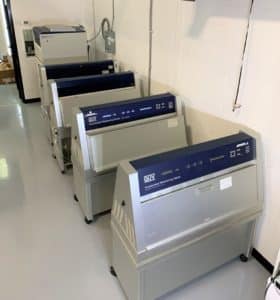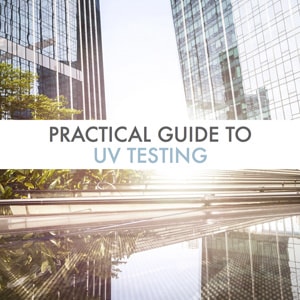SAE J1455
Environmental Practices for Electronic Equipment Design in Heavy-Duty Vehicle Applications

Evaluation of the environmental performance of electronic systems and components of heavy-duty trucks—use and factors to be considered:
The goal of SAE J1455 is to provide guidelines to the designer as a means to help the latter achieve the desired environmental design objectives of the sample. Also, this present practice refers to other test protocols that are required to simulate a severe climatic environment which assesses the overall performance of an electronic equipment of a heavy-duty vehicle. In other words, this simulation evaluates the primary factors that have an effect on the overall performance of the specimen as a means to help validate its environmental design. More precisely, the tests mentioned in this standard evaluate the performance of electronic systems and components in regard to mechanical, chemical and biological stresses. In addition, this standard provides detailed information regarding the influence of every environmental factor as a means to elucidate their repercussions on the performance of electronic components. Lastly, it is important to mention that this method does not intend to substitute the operational tests as they are still required to assess their actual performance onto the field.
Typical experimental parameters for SAE J1455:
The number of samples required has to be specified and their size depends on the test protocol used. Table 1 lists methods that characterize the effects of each environmental parameters that have an influence on the overall performance of the test specimen.
Table I: Factors evaluate by this test protocol
| Factors being evaluated | Test used |
| Temperature | 1. Temperature cycle test 2. Thermal shock test 3. Thermal stress |
| Humidity | 1. Thermal humidity cycling |
| Salt spray atmosphere | 1. Salt spray (ASTM B117) 2. Immersion testing (SAE J2721) |
| Exposure to chemicals and oils | 1. High exposure splash testing 2. Hazardous and light to moderate splash test |
| Steam cleaning and pressure washing | 1. Pressure washing tests |
| Fungus | 1. Examination of a test component inoculated with a fungal spore solution 2. Review of the product material and component datasheets |
| Dust and sand | 1. Dust and sand tests |
| Gravel bombardment | 1. Chipping resistance of the surface coating (SAE J400) |
| Altitude | 1. Thermal cycles at a lower operating pressure |
| Mechanical vibration | 1. Swept sine vibration tests 2. Random vibration testing 3. Vehicle testing over test tracks |
| Mechanical shock | 1. Handling drop test 2. Transit drop test 3. Installation harness shock test 4. Crash shock test |
| Combined environmental testing | 1. A test which combines several environmental factors together in a single test |
| General Heavy-duty truck electrical environment | 1. Steady-state electrical characteristics tests 2. Transient, noise and electrostatic characteristic tests for 12 and 24 V 3. Electromagnetic compatibility and interference tests |
Other test methods related to SAE J1455:
For additional related test methods, please see cyclic corrosion testing, ASTM D5276, ASTM D880.
Micom also offers many other tests for the automotive and aerospace industries through its SAE testing services.
Practical UV Testing Guide
Sunlight exposure can have harmful impacts on carbon-based
materials such as coatings, polymers, textiles, and many others.
Learn more about our in-laboratory UV testing process in this guide.


